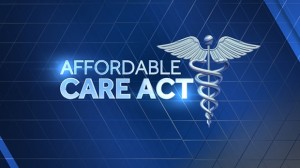In the 19 states that have not expanded eligibility to Medicaid to lower-income individuals, the results of the Affordable Care Act (ACA) are minimal, at least as observed from ‘street level’ among those who are not covered by group or government-sponsored health plans. In Florida, for example, more than half a million remain without health insurance. Florida medical clinics report little change in the overwhelming demand for indigent care from uninsured patients. In Texas, another five million remain uninsured. Even though the number of people with insurance has increased in these states, the gap in coverage caused be deductibles creates obstacles to care for many with ACA-compliant health insurance. Altogether, more than 50 million people in the U.S. still lack adequate health insurance coverage. This is only slightly less than before implementation of ACA. The Kaiser Family Foundation covers the impact of Medicaid expansion (or lack of expanded coverage) on a state by state basis.
Lately I notice an increase in interest in mini-med health insurance plans among residents of these 19 states. The trend seems to be fueled by large rate increases facing many for 2017. This is insurance like Core Health Insurance and a range of supplemental insurance plans listed on Freedom Benefits. The logic is that something is better than nothing and these plans cover more of the expenses that people with limited financial resources feel are important. I still take a few OnlineNavigator telephone calls per day from individuals who have questions about finding health insurance coverage. This gives me a sense of consumer thinking, even of only from this anecdotal sampling.
It is important to recognize that these non-ACA health insurance plans leave big gaps in coverage and provide no protection for catastrophic medical expenses. It is possible, for those who can afford it, to enroll for both a supplemental plan and the ACA-compliant coverage when the annual open enrollment period opens in November. Mini-med plans, short-term insurance and supplemental insurance plans can be started at any time. Ideally, these are combined with basic ACA-compliant overage to provide the best value overall coverage.
One unresolved issue is how the tax penalty for uninsured individuals will impact these millions without insurance this year. Some will qualify for an exemption from the penalty but others may be caught unaware of the huge financial impact at tax filing time next spring. Although IRS will not pursue collection of the tax penalty, those affected will not be eligible for a tax refund.
The final trend I notice is an increased demand for advice from those who have essentially given up on the possibility of health insurance. They conclude that they just cannot afford health insurance and now want to deal with limiting the financial risks. This may involve some asset planning to consider the impact of a possible medical bankruptcy. Again, this is more likely to occur in those 19 states that have not expanded Medicaid programs.
As a side note, I notice that experience in small business health insurance vary so widely that it is difficult to draw out any trends. I contributed observations to a Wall Street Journal reporter last month but the resulting article was almost immediately contradicted by other sources. In short, I don’t think that it is useful to attempt to make general observations about the small business health insurance field.
[contact-form-7 id=”4556″ title=”Boilerplate Contact”]


Leave a Reply